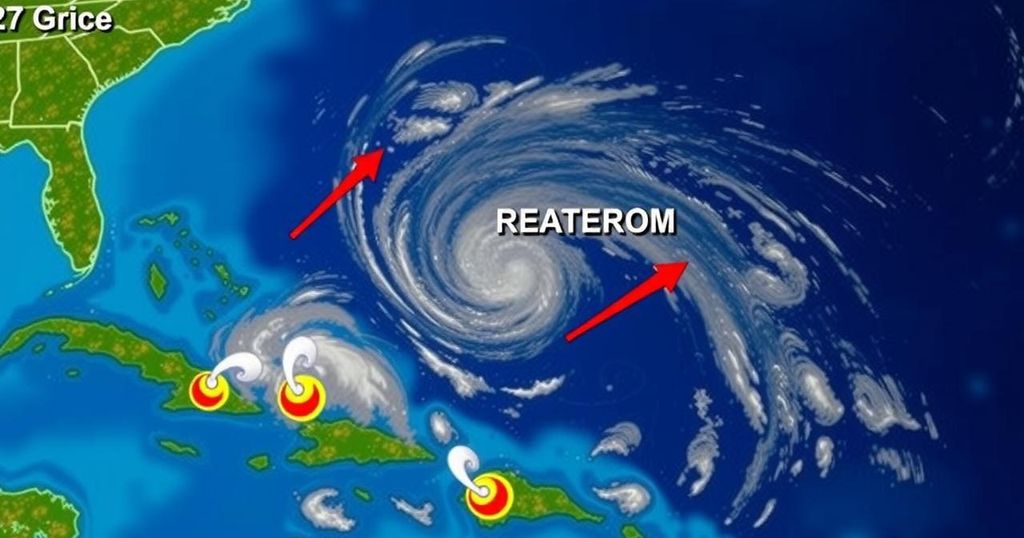The hurricane season is not yet over as November approaches, with three tropical areas under close observation, particularly one in the western Caribbean that may soon develop into a tropical storm. Although this season has been marked by above-average storm activity, the Gulf Coast may benefit from protective winds mitigating potential threats. Despite traditional trends indicating a decline in activity this month, the likelihood of continued disturbances persists, necessitating awareness and preparedness.
The hurricane season remains active as it approaches its final month, with three tropical areas in the Atlantic demanding attention. Notably, a significant area of concern is emerging in the western Caribbean, which has a heightened potential to evolve into a tropical depression late in the upcoming weekend or early next week, as indicated by the National Hurricane Center. Should this system develop, it may subsequently strengthen into a tropical storm, designated as Patty. The precise trajectory of this potential storm remains uncertain; however, there is a likelihood that it may drift towards the Gulf of Mexico. Additionally, significant rainfall and gusty winds are anticipated in the western Caribbean, as well as parts of Central America and Mexico’s Yucatán Peninsula next week. Meanwhile, weather conditions over the US Gulf Coast are expected to provide some relief from recent hurricane activity, with upper-level winds potentially inhibiting any incoming systems from gaining strength. Two other regions monitored exhibit low probabilities for tropical development over the next week. One of these areas experienced severe weather that led to record rainfall in Puerto Rico, with the possibility of more flooding in the upcoming days as it progresses toward the west. The second area of concern, located in the open Atlantic, is not projected to pose a threat to land regardless of its development. Traditionally, hurricane season tapers off in November; however, this year’s statistics show an above-average number of storms, hurricanes, and major hurricanes. The United States has already endured five hurricanes this season, despite a notable lull during the usual peak months. Given this pattern, the expectation for activity in November remains significant. While November storms are less common, they typically occur in the Caribbean and the warmer regions of the Atlantic, where conducive conditions can persist longer. The Gulf of Mexico is usually less active during late fall due to increasing disruptive winds, yet warm water remains a potential catalyst for development, akin to past storms. The Climate Prediction Center suggests a possibility of ongoing activity in the Caribbean as November progresses. Although the hurricane season officially concludes on November 30, historical data indicates that tropical systems may continue to manifest beyond this date, with numerous instances recorded in December.
The season for hurricanes spans from June 1 to November 30, with increased activity typically experienced during the late summer and early fall. November is historically characterized by a marked decrease in tropical storm formation, yet this year has presented atypical patterns, featuring an above-average number of storms and heightened activity that confounds traditional meteorological expectations. The National Oceanic and Atmospheric Administration (NOAA) maintains a comprehensive database documenting tropical storm and hurricane activity, which reveals that while many storms reach land prior to November, considerable activity can still be observed during this month and even in December.
In conclusion, as the hurricane season enters its final month, the potential for tropical disturbances remains evident, particularly in the Caribbean. While the probabilities of development in certain areas are rising, forecasts suggest that conditions over the Gulf of Mexico may provide protective measures against strengthening storms. Historical data emphasizes the unusual nature of this year’s season, suggesting that continued vigilance is necessary as tropical systems can manifest even beyond the formal end of the hurricane season.
Original Source: www.cnn.com







